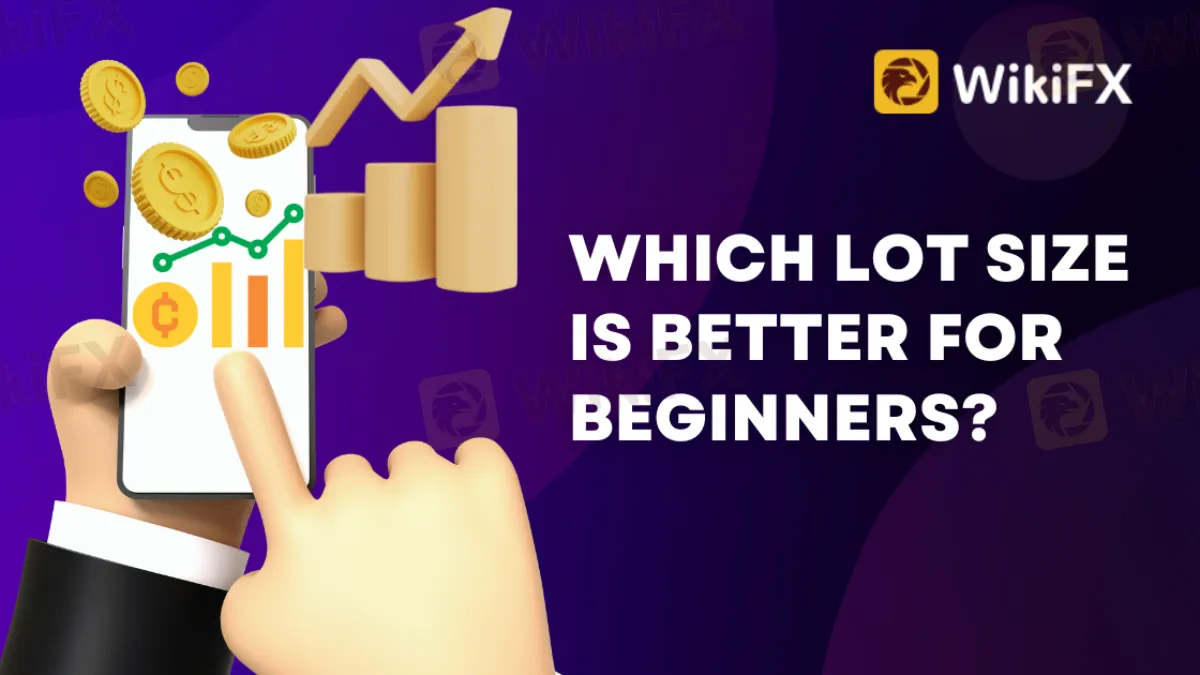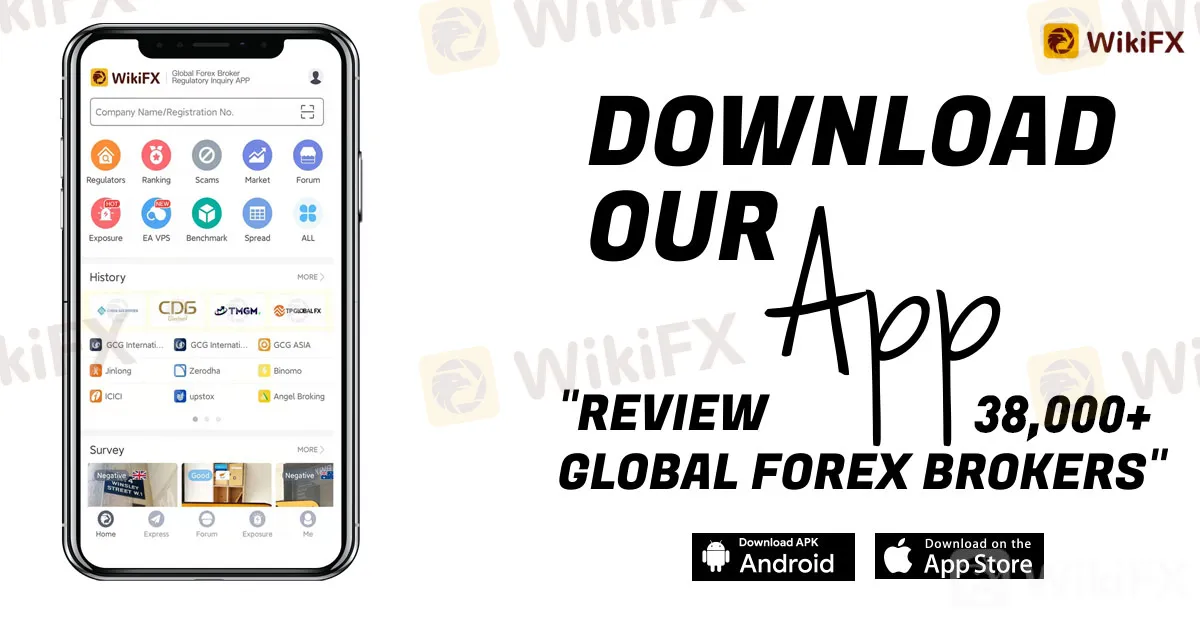简体中文
繁體中文
English
Pусский
日本語
ภาษาไทย
Tiếng Việt
Bahasa Indonesia
Español
हिन्दी
Filippiiniläinen
Français
Deutsch
Português
Türkçe
한국어
العربية
Which Lot Size Is Better For Beginners?
Abstract:When you initially start learning about forex, you will undoubtedly come across the phrase "lot" many times. A lot is a way of calculating how many money units are needed for a deal. Given the significant exchange rate fluctuations that often occur in the currency market, it is critical to assign and use appropriate lot sizes in forex trading risk management methods.

Because the lot size has a direct impact on the risk you're taking, it's the first thing you should thoroughly grasp before determining your entry and departure locations. In this post, we will define a forex lot and discuss the most popular forex lot sizes for new traders.
What Is the Definition of a Lot in Forex?
A lot is the size of your Forex transactions. In another sense, a lot is the number of currency units that you will exchange in Forex. The lot size with which you trade has a direct influence on how much a market shift impacts your trading account. A larger lot may provide large gains, but it may also yield large losses. As a result, your transaction volume influences your trading techniques and risk management. When trading forex, you will commonly encounter four forex lot sizes.
1. Common Lot
This is the most typical webpage you will encounter while trading with various forex brokers' regular account types. In a currency pair quotation, a normal lot equals 100,000 units of the base currency.
A regular lot, for example, is a $100,000 deal if your account is financed in US dollars. When trading with this size position, the trader's account value will change by $10 for every pip move.
Assume you wish to buy a normal lot of USD/EUR at a rate of 1.24, which means you'll pay €124 000 for $100,000.
The majority of experienced forex traders are used to trading at this level, and it is worth mentioning that, thanks to leverage in forex, you need not need a complete $100,000 in your account to trade a regular lot. When most people talk about a lot in forex trading, they're referring to this figure.
2. Miniature Lot
A micro lot is 10,000 units in size, which is 10% of a conventional lot. As a result, when a trader places a 0.1 lot order, he is trading 1 micro lot. If you use a dollar-based account and trade a dollar-based pair, each pip in your transaction is worth around $1.00.
It is an excellent option for forex traders who like to trade with minimal, or no, leverage. If you are a newbie and want to start trading with small lots, be sure you are adequately capitalized.
3. Micro Lot
A micro lot is 1000 units in size, which is 1% of a regular lot. As a result, if you initiate a transaction with a 0.01 lot, you will trade one micro lot. In the case of a dollar-based pair, 1 pip is equivalent to 10 cents.
Micro lots are the smallest tradable lot offered to most brokers and are an excellent place to start for new traders. Micro lots are ideal for novices who wish to limit risk to a minimum while learning to trade.
4. Nano Lot
The nano lot is the lowest trading lot size accessible. A nano lot consists of 100 units or 0.1% of a conventional lot. You will trade 1 nano lot if you initiate a trade with 0.001 lot.
The micro lot is becoming more uncommon, although it is still accessible via several major forex trading companies. It might be a good beginning lot size for a new trader who wants to check out forex training or a trader who wants to test a new trading strategy. It provides real money trading in addition to a demo trading account, but with a significantly lower amount of risk.
Which Lot Size Is Best for Forex Newbies?
It is best for a newbie to start with modest lot sizes. Even the most seasoned trader may feel comfortable with this. Because poor money management affects everyone, including those who are not beginners. Beginner traders are sometimes recommended to trade using mini, micro, or nano quantities to prevent large losses.
Also, bear in mind that not all lot sizes are accessible to all trading account types, so make sure that the broker you are contemplating utilizing will supply you with the lot size you are most interested in trading given the amount of money you have available to put in your trading account.
Conclusion
Determining the suitable lot size to trade may be as crucial as picking which direction you should take a position in order for a trader to efficiently manage risk and other relevant aspects, such as an acceptable degree of leverage for their trading account.
The forex lot size that works best for you is determined by a variety of variables, including how you want to trade. Beginners should begin trading forex with micro-lots or mini-lots. You may advance to the next level after gaining experience and confidence.
Stay tuned for more Forex Educational articles.
Download the WikiFX App from the App Store or Google Play Store to stay updated on the latest news.

Disclaimer:
The views in this article only represent the author's personal views, and do not constitute investment advice on this platform. This platform does not guarantee the accuracy, completeness and timeliness of the information in the article, and will not be liable for any loss caused by the use of or reliance on the information in the article.
Read more

The January Effect of 2025 in Forex Markets
Like other financial markets, the forex market is influenced by various factors, including economic data, geopolitical events, and market sentiment. However, one often overlooked factor is seasonality—patterns that recur at specific times of the year. One such seasonal phenomenon is the "January Effect," which can have a notable impact on currency trading.

Just2Trade: SAFE or SCAM?
Just2Trade, founded in 2016, is from Cyprus. CYSEC currently regulates it and offers trading services for Forex, Stocks, Futures, CFDs, Bonds, Metals, Options, CFDs, etc. There are four trading platforms and three accounts for traders to choose from. In addition, this brokerage also supports commission and spread 0 starts.

OPEC's Profound Influence on the Oil Market
At present, oil prices remain relatively stable, but global economic recovery and shifting market demands continue to drive price fluctuations. Amid an uncertain global economic and geopolitical landscape, OPEC’s policies and actions remain key determinants of oil prices.

What Are The Top 5 Cryptocurrency Predictions For 2025?
Discover the top 5 cryptocurrency predictions for 2025, including Ethereum's rise, a potential bear market, meme coin struggles, and regulatory shifts.
WikiFX Broker
Latest News
PH SEC Issues Crypto Guidelines for Crypto-Asset Service Providers
FTX Chapter 11 Restructuring Plan Activated: $16 Billion to Be Distributed
Think Before You Click: Malaysian Loses RM240,000 to Investment Scam
Share Industry Insights and Discuss Forex Market Trends
Top 9 Financial Fraud Cases in Recent History
KuCoin Pay Introduces Easy Crypto Payments for Merchants
Malaysian Man Killed in Alleged Forex Dispute-Related Attack
Is OneRoyal the Right Broker for You?
How Big is the Impact of the USD-JPY Rate Gap on the Yen?
What Euro Investors Can't Afford to Miss
Currency Calculator






